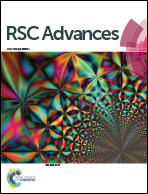Effect of temperature and alloying elements (Fe and Bi) on the electrical resistivity of Sn–0.7Cu solder alloy
Abstract
In this paper, we investigated the electrical resistivity as a function of temperature of the Sn–0.7Cu solder alloy with the addition of Fe and Bi. The electrical resistivity were characterized by the four-point probe method. Apparent change in electrical resistivity was witnessed by the addition of both Fe and Bi. At room temperature, the electrical resistivity was found to be increased with the addition of Fe, as well as a further increase with the addition of Bi. Fe and Bi modified Sn–0.7Cu alloys also experienced the similar increasing trend when they were subjected to higher temperatures within the range of 300–423 K. Chemical state of Sn was analyzed by means of X-ray photoelectron spectroscopy (XPS). The results revealed the presence of Sn in Sn2+, Sn4+ and state of metallic Sn. With the addition of Fe & Bi, a substantial decrease was observed in the atomic percent of the Sn4+ chemical state. X-ray diffraction (XRD) was performed on the alloys. The XRD pattern showed disturbance in the 2 theta values with the addition of Bi. The disturbance confirmed the presence of stress and imperfections in the crystal lattice. Field emission scanning electron microscope (FESEM) micrographs revealed the formation of the FeSn2 intermetallic compound with the addition of Fe. However, the addition of Bi promotes the formation of solid solution and goes into primary β-Sn dendrites. Microstructural changes, shifts in the chemical state of Sn and a disturbance in the XRD peaks resulting from the addition of Fe and Bi have been correlated to the variation in electrical resistivity.


 Please wait while we load your content...
Please wait while we load your content...